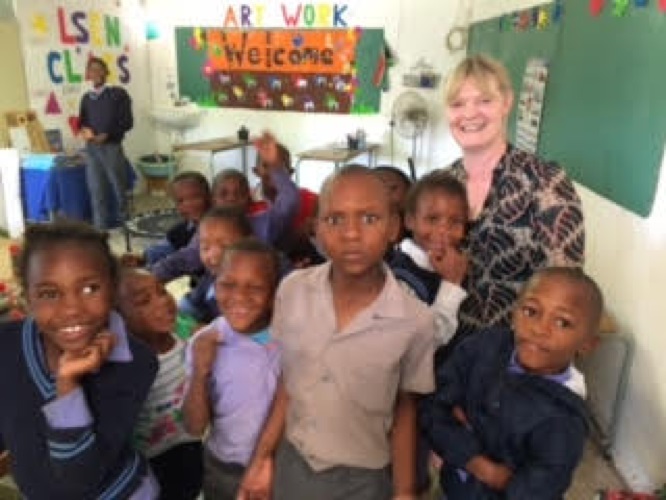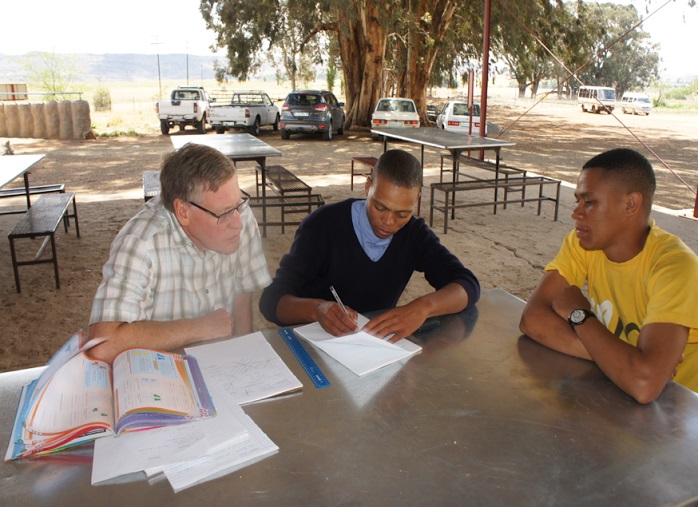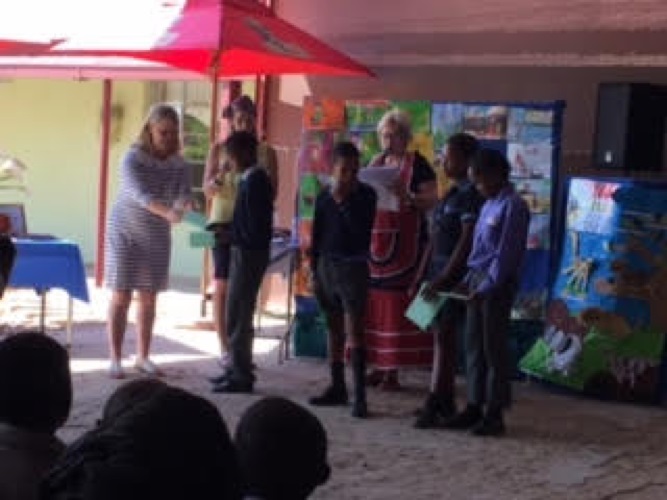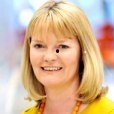After 30 years of management consulting with C&L, PWC and IBM - "How hard could it be?", we thought....
“Martina, we really need your help! Would you be an angel and teach the English classes to the older children for the next month? Our normal teacher is being taken into hospital.” It was October 2016, day two of our volunteering experience at a remote, rural farm school near Van Stadensrus in the Free State of South Africa. Never having taught anyone but a bunch of consultants before, how hard can it be, I reasoned to myself. “Of course I will” I replied, “just tell me what you need me to do”.
Having recently retired after a career including thirty years of management consulting with Coopers & Lybrand, PricewaterhouseCoopers and IBM, my partner, Ian, and I had arranged to come and volunteer at Gelukwaarts Farm School - Gelukwaarts means ‘happy, go well’ in Afrikaans – seemed like a good motto for the luck I needed now. Some twenty years ago, when working on a systems implementation in Stellenbosch with Coopers & Lybrand, I rented a garden cottage of the Potgieter family - Margie, Fanie and their three children. Becoming great friends over the years, I had visited the farm, Longlead, where Margie grew up and which was now owned by her brother, Piet and his wife, Sunet. The Gelukwaarts School is established on Longlead farm, about 160 kilometres from Bloemfontein, the nearest major town. It is very close to the border with Lesotho, the Mountain Kingdom of Africa, and the route to the farm school takes you some 30 kilometres off the tar roads, along graded dirt roads. Certainly not on the tourist route!
Gelukwaarts operates in a deprived area, which has been badly affected by drought in the last two years. The local people are from the Basotho race; peace loving people who speak Sotho as their language. Those lucky enough to have a job average an income of about £1700 per year; the more benevolent farmers and their wives take a real responsibility for their workforce and large extended families. The school is in the Department of Education system and gets funding for books and teachers – but there is no money available for capital projects. Originally started by Piet’s mother, Marguerite, in the 1950’s, the school became Gelukwaarts when three local schools amalgamated – the word local being a loose term as we are talking about an area of some 220 square kilometres. After writing over 500 letters, the headmaster of the time, got a grant from the National Union of Mineworkers to extend the existing one classroom to three classrooms. Originally the older children were taught vocational skills, Agriculture and Hotel & Catering, but now after a government policy change, the focus is on the national curriculum.
The school teaches approximately 160 learners from Reception to Grade 9, age 6-16, with a head teacher and eight teachers, a mix of local Sotho people and Afrikaan farmers’ wives. All teaching is in English, as an international language, but obviously a real challenge for the children who speak Sotho at home, and perhaps know a smattering of Afrikaans. After a general education up to the age of 12, the learners work towards external examinations at age 16, very much the equivalent of our GCSEs, with English and Mathematics being important subjects to pass. The parents pay about £2 per month for each child to attend school. School buses are provided as most children are travelling between 12-30 kilometres to get there. School has four terms and is from 7.30am to 2pm each day – with a meal provided at midday, important to many of the children as for some it could be the only food of the day.
The original plan was for myself to work as a classroom assistant, helping with the Learners with Special Education Needs (LSEN) and with reading generally. Ian, originally a Mathematics graduate, was individually coaching the Grade 9 (age 16, GCSE equivalent) class to help get them through their Mathematics examination due in November. With the plan changed to my teaching English to the 12-16 year olds, I frantically prepped overnight from the five grade text books and teachers’ guides – just like getting ready for a major proposal presentation! My first two hour lesson with 35 children aged 12 (Grade 5) and 13 (Grade 6) was overwhelming, a real baptism of fire. What I knew, but had not really factored in sufficiently, was that the teaching was multi-grade. Two different curricula, addressing two halves of a classroom, ability levels in English varying widely, and discipline and concentration levels those of young teenagers! The trick was to get one side going on something involving reading or writing whilst trying to teach the other half.
 Over time, things settled down – though with assessments to be done, books to be marked and a syllabus to get to grips with (I had certainly forgotten what gerunds and neologisms were if I ever knew!) it felt like real work, not an easy bit of ‘light’ volunteering. Ian acted as my classroom assistant, helping with the Grade 5s. The text books were excellent, a publisher called Platinum, used in the lowliest farm schools and the grandest private schools. The Grade 7s were a small class of just one age group. The Grade 8s and 9s was again multi-grade, and holding the discipline together in a class full of mixed, hormonal teenagers was probably my biggest challenge. When I was not teaching face to face, I prepared lessons and also helped out with the LSEN class, which was a pleasure. I certainly have a lot more sympathy for teachers than I ever had before – it’s a tough job!
Over time, things settled down – though with assessments to be done, books to be marked and a syllabus to get to grips with (I had certainly forgotten what gerunds and neologisms were if I ever knew!) it felt like real work, not an easy bit of ‘light’ volunteering. Ian acted as my classroom assistant, helping with the Grade 5s. The text books were excellent, a publisher called Platinum, used in the lowliest farm schools and the grandest private schools. The Grade 7s were a small class of just one age group. The Grade 8s and 9s was again multi-grade, and holding the discipline together in a class full of mixed, hormonal teenagers was probably my biggest challenge. When I was not teaching face to face, I prepared lessons and also helped out with the LSEN class, which was a pleasure. I certainly have a lot more sympathy for teachers than I ever had before – it’s a tough job!
So it was certainly challenging for Ian and I; but the challenges for the children were in another league. There is extreme poverty and some hunger. Housing tends to have electricity but not running water, so getting washed and ready for school – particularly in the frozen mornings of the mid-country winter – was not easy. Children were often being brought up by grandmothers or surrogate parents, because parents were working away in the city; or in some cases, dead from HIV/Aids. There were instances of young girls having been raped and, one day, a girl came into the staffroom unable to see, apparently going blind. Most houses did have TV but there were no mobile phones or wifi – very much a third world existence.
 We were lucky enough to be there for Prize Day – although the only prizes were a couple Ian and I donated and photocopied certificates. The school hall which was an open-sided, corrugated iron covered structure was decorated with art drawn for Heritage Day and groups of children entertained with local tribal singing and dancing. The top academic performer, a young woman called Nthabaleng, had the ambition to do medical training in Cuba and come back to South Africa and work as a doctor. Others had ambitions to be a policeman or an electrician; some would work as farm labourers; but the harsh reality is that some will not find work. My proudest achievements were to arrange to get Nthabaleng into High School in Bloemfontein and I am in the third year of paying for a young man from the farm, Tsepo, to attend university to study Quantity Surveying and Building Management.
We were lucky enough to be there for Prize Day – although the only prizes were a couple Ian and I donated and photocopied certificates. The school hall which was an open-sided, corrugated iron covered structure was decorated with art drawn for Heritage Day and groups of children entertained with local tribal singing and dancing. The top academic performer, a young woman called Nthabaleng, had the ambition to do medical training in Cuba and come back to South Africa and work as a doctor. Others had ambitions to be a policeman or an electrician; some would work as farm labourers; but the harsh reality is that some will not find work. My proudest achievements were to arrange to get Nthabaleng into High School in Bloemfontein and I am in the third year of paying for a young man from the farm, Tsepo, to attend university to study Quantity Surveying and Building Management.
We had lots of fun too – with trips to Lesotho, the Golden Gate Mountain Park, Bloemfontein to see the rugby Curry Cup final and a week in the Western Cape. We stayed in a small disused farmhouse about 5 kilometres from school. Our hosts, Piet and Sunet, were the epitome of kindness and generosity, not only to us but to their team of workers, the school children and their carers. It was lambing time on the farm and the population of sheep increased before our eyes – from 3000 to about 5500. The farm grows maize, soya and lucerne and also sells the lambs and wool – the constant battle is water and irrigation, with everyone praying for rain each day. It is a harsh climate with the temperature in the four weeks we were there varying between 0 and 35 degrees centigrade, plus dust storms and over in Bloemfontein a fierce hail storm, leaving a covering of four inches of ice.
We plan to go back again in October 2017; I am hoping to raise some money through Rotary International and other means (do contact me if you think you can help!) to pay for another classroom to reduce the amount of multi-grade teaching which is holding the children back and meaning some do not achieve their full potential. Ian and I certainly learned a lot about our own capabilities, and hopefully we managed to pass some knowledge along to the school children.

Freeman Martina Platts